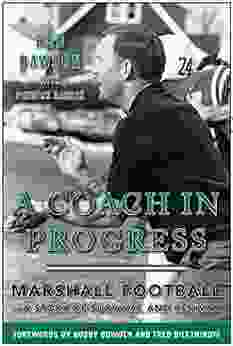Lessons Learned in Software Testing: A Comprehensive Guide for Test Engineers

4.5 out of 5
| Language | : | English |
| File size | : | 2054 KB |
| Text-to-Speech | : | Enabled |
| Screen Reader | : | Supported |
| Enhanced typesetting | : | Enabled |
| Print length | : | 321 pages |
| Lending | : | Enabled |
Software testing is a crucial aspect of software development that ensures the quality, reliability, and performance of software products. By conducting rigorous testing, organizations can identify and mitigate potential defects and bugs, leading to enhanced user satisfaction and reduced costs.
Over the years, test engineers and quality assurance professionals have accumulated a wealth of knowledge and experience, resulting in valuable lessons learned that can help to improve testing practices and strategies.
1. Plan Early and Define Testing Requirements
Thorough planning is essential for successful software testing. Test engineers should be involved in the early stages of the software development process to understand the project requirements and scope. This allows them to define comprehensive testing requirements that align with the project goals and objectives.
Well-defined testing requirements provide a solid foundation for developing effective test cases and identifying appropriate testing techniques. By establishing clear expectations upfront, test engineers can ensure that the testing effort is focused and efficient.
2. Test Early and Often
Early and frequent testing is a key principle in software testing. By starting testing as early as possible, teams can identify and address defects early in the development cycle. This approach reduces the risk of defects propagating through the development process and becoming more difficult and costly to fix later.
Regular testing throughout the development cycle helps to ensure that the software is consistently meeting requirements and that changes do not introduce unexpected issues. Automated testing tools can be leveraged to facilitate early and frequent testing, freeing up manual testing efforts for more complex and strategic testing activities.
3. Use the Right Testing Techniques
Choosing the appropriate testing techniques for each project is crucial for effective testing. A wide range of testing techniques exists, each serving a specific purpose and providing unique benefits.
Functional testing verifies that the software performs according to the specified requirements. Non-functional testing focuses on evaluating the software's quality attributes, such as performance, security, and usability.
By utilizing the most suitable testing techniques for the specific project context, test engineers can optimize their testing efforts and achieve the desired test coverage.
4. Automate Tests Whenever Possible
Test automation has become an indispensable aspect of modern software testing. Automated tests can be executed repeatedly and consistently, freeing up manual testing resources for more complex and critical testing tasks.
Automated tests can also improve the accuracy and reliability of testing, reducing the potential for human error. By automating repetitive and time-consuming testing tasks, test engineers can allocate their time to more value-added activities, such as exploratory testing and test analysis.
5. Collaborate Effectively with Developers
Effective collaboration between test engineers and developers is essential for successful software testing. By fostering open communication channels and establishing a collaborative environment, both teams can work together to improve the software quality.
Regular communication helps to ensure that testing requirements are well-understood by developers, and that developers are aware of potential issues identified during testing. Collaborative problem-solving can lead to more robust and maintainable code, enhancing the overall software quality.
6. Leverage Test Management Tools
Modern test management tools provide comprehensive support for planning, executing, and managing software testing activities. These tools can centralize test case management, facilitate collaboration, track progress, and generate reports.
By utilizing test management tools, test engineers can streamline their testing processes, improve efficiency, and gain valuable insights into the testing process. These tools can also provide integrations with other development tools, such as issue tracking systems and continuous integration platforms, enhancing overall software development productivity.
7. Track Defects and Analyze Results
Thorough defect tracking and analysis are essential for continuous improvement in software testing. By tracking defects effectively, test engineers can identify patterns, prioritize issues, and provide valuable feedback to developers.
Analyzing test results provides insights into the effectiveness of testing efforts and helps to optimize test plans. By reviewing test metrics, such as test coverage, defect density, and test execution time, test engineers can identify areas for improvement and fine-tune their testing strategies.
8. Stay Updated with Testing Trends
The software testing landscape is constantly evolving, with new techniques, tools, and methodologies emerging. To stay ahead of the curve, test engineers should continuously keep themselves updated with the latest industry trends.
Attending conferences, reading industry publications, and experimenting with new technologies can help test engineers expand their knowledge and skills. By staying abreast of testing innovations, they can adopt best practices and improve their testing capabilities.
Lessons learned in software testing provide a wealth of valuable knowledge and insights for test engineers to enhance their testing practices and strategies. By implementing these lessons, organizations can improve the quality, reliability, and performance of their software products.
Embracing early planning, early and frequent testing, appropriate testing techniques, test automation, collaboration, test management tools, defect tracking, and continuous learning can help test engineers become more effective and efficient in their role.
By leveraging these lessons learned, organizations can build a robust and comprehensive software testing process that aligns with the ever-changing demands of the software industry.
4.5 out of 5
| Language | : | English |
| File size | : | 2054 KB |
| Text-to-Speech | : | Enabled |
| Screen Reader | : | Supported |
| Enhanced typesetting | : | Enabled |
| Print length | : | 321 pages |
| Lending | : | Enabled |
Do you want to contribute by writing guest posts on this blog?
Please contact us and send us a resume of previous articles that you have written.
 Fiction
Fiction Non Fiction
Non Fiction Romance
Romance Mystery
Mystery Thriller
Thriller SciFi
SciFi Fantasy
Fantasy Horror
Horror Biography
Biography Selfhelp
Selfhelp Business
Business History
History Classics
Classics Poetry
Poetry Childrens
Childrens Young Adult
Young Adult Educational
Educational Cooking
Cooking Travel
Travel Lifestyle
Lifestyle Spirituality
Spirituality Health
Health Fitness
Fitness Technology
Technology Science
Science Arts
Arts Crafts
Crafts DIY
DIY Gardening
Gardening Petcare
Petcare Brendan Noble
Brendan Noble Janice Mcdonald
Janice Mcdonald Courtney Loquasto
Courtney Loquasto Martin E P Seligman
Martin E P Seligman Michel Boivin
Michel Boivin Kathy Charner
Kathy Charner Isle Osaki
Isle Osaki Lorraine Allman
Lorraine Allman Keith Bateman
Keith Bateman Manveen Kaur
Manveen Kaur Pat Falvey
Pat Falvey Michael Angelo Costa
Michael Angelo Costa Scott A Small
Scott A Small Tony Kemerly
Tony Kemerly Be Learning
Be Learning Matt Kalman
Matt Kalman Match
Match Jeremy Wade
Jeremy Wade Charles E Schaefer
Charles E Schaefer Mike Acker
Mike Acker Thomas J Sims
Thomas J Sims Joe Cermele
Joe Cermele Simon Singh
Simon Singh Stuart Clark
Stuart Clark Jenny Hall
Jenny Hall Inc Barcharts
Inc Barcharts J P Moreland
J P Moreland Sadie Keller
Sadie Keller Stephanie Jeanette Bradley
Stephanie Jeanette Bradley Richard Jefferies
Richard Jefferies Milo Kemp
Milo Kemp Julie Hall
Julie Hall Walter Martin
Walter Martin Louise Davidson
Louise Davidson Jim Parks
Jim Parks Stefan Burban
Stefan Burban Regina Leeds
Regina Leeds Robert K Yin
Robert K Yin Yvon Chouinard
Yvon Chouinard Roz Maclean
Roz Maclean David Nicholls
David Nicholls Edith Pattou
Edith Pattou Colin Allen
Colin Allen Drew Neil
Drew Neil Josh Sundquist
Josh Sundquist Brandi Dion
Brandi Dion Darren Byler
Darren Byler Payal Khurana
Payal Khurana Arthur Benjamin
Arthur Benjamin Hussein A Abbass
Hussein A Abbass Robert Heidler
Robert Heidler Stefan Klein
Stefan Klein Rick Curtis
Rick Curtis Hazrat Inayat Khan
Hazrat Inayat Khan Gerry Cheevers
Gerry Cheevers Martin Shaw
Martin Shaw Pittacus Lore
Pittacus Lore Auriane Desombre
Auriane Desombre Howard Burton
Howard Burton Richard Hartley
Richard Hartley Paul M Sutter
Paul M Sutter Braun Anthony
Braun Anthony Michael Grant
Michael Grant Brad Edmondson
Brad Edmondson Margarita Engle
Margarita Engle Seth Fletcher
Seth Fletcher Mark Zegarelli
Mark Zegarelli Elizabeth E Wein
Elizabeth E Wein Deborah Jiang Stein
Deborah Jiang Stein Bryce M Towsley
Bryce M Towsley Duncan Wells
Duncan Wells Julia Ann Clayton
Julia Ann Clayton Gillian Hutchinson
Gillian Hutchinson Mark Beaumont
Mark Beaumont Karin Cadwell
Karin Cadwell Braeden Baade
Braeden Baade Prem Carnot
Prem Carnot Milli Hill
Milli Hill Nadine Slavinski
Nadine Slavinski Michael Mccarthy
Michael Mccarthy Hsiang Shui Chen
Hsiang Shui Chen Hanna Seymour
Hanna Seymour Mike Rohde
Mike Rohde Dustin Lynx
Dustin Lynx Larry Krieger
Larry Krieger William Egelman
William Egelman Stephanie Muntone
Stephanie Muntone Cal Peternell
Cal Peternell Kirstie Mclellan Day
Kirstie Mclellan Day Arun Jagannathan
Arun Jagannathan Katie Shaw
Katie Shaw Jesper Juul
Jesper Juul Catherine Tucker
Catherine Tucker Jeff Galloway
Jeff Galloway Wayne Teasdale
Wayne Teasdale Louis Berney
Louis Berney Arturo Escobar
Arturo Escobar Michael R Ange
Michael R Ange Paul Henley
Paul Henley Jake Maloney
Jake Maloney Karim Soliman
Karim Soliman Stuart Ritchie
Stuart Ritchie Ethan Sawyer
Ethan Sawyer Linda Carter
Linda Carter Lindsey Bliss
Lindsey Bliss Kerry Keene
Kerry Keene Jessica Seinfeld
Jessica Seinfeld Brett Topel
Brett Topel The College Board
The College Board Martin Hall
Martin Hall Lsatmax Lsat Prep
Lsatmax Lsat Prep P T Shank
P T Shank Kindle Interactive Edition
Kindle Interactive Edition Marcia K Anderson
Marcia K Anderson Stephen Jay Gould
Stephen Jay Gould Huntley Fitzpatrick
Huntley Fitzpatrick Eric S Raymond
Eric S Raymond Claire Hartfield
Claire Hartfield Simone Elkeles
Simone Elkeles Zapheria Bell
Zapheria Bell Cliff Jacobson
Cliff Jacobson Elaine Menger
Elaine Menger James R Andrews
James R Andrews Lore Cottone
Lore Cottone Thomas Kinkade
Thomas Kinkade Belinda Norton
Belinda Norton Joanne Rodrigues
Joanne Rodrigues Holly Jackson
Holly Jackson Michelle Medlock Adams
Michelle Medlock Adams Christia Spears Brown
Christia Spears Brown Eliza Reid
Eliza Reid Sarah Leah Chase
Sarah Leah Chase E J R David
E J R David Graham Bowley
Graham Bowley Leigh East
Leigh East Jada Fisher
Jada Fisher Asanaro
Asanaro Arthur Beiser
Arthur Beiser Jeff Seidel
Jeff Seidel Al Sweigart
Al Sweigart Mariolina Ceriotti Migliarese
Mariolina Ceriotti Migliarese Sofia Price
Sofia Price Kindle Edition
Kindle Edition Cassandra Vieten
Cassandra Vieten Kurt Koontz
Kurt Koontz Laura Hulleman
Laura Hulleman Dan Benardot
Dan Benardot Noelle Stevenson
Noelle Stevenson Rachel Blunk
Rachel Blunk Bradford Angier
Bradford Angier Joyce Goldstein
Joyce Goldstein Barack Obama
Barack Obama Frank Morin
Frank Morin Gary Paulsen
Gary Paulsen Briana Wiles
Briana Wiles W Michael Kelley
W Michael Kelley Rob Rachowiecki
Rob Rachowiecki Elliot Davis
Elliot Davis Douglas Fisher
Douglas Fisher Mark Jackson
Mark Jackson Rod Heikell
Rod Heikell Elizabeth Parker
Elizabeth Parker Eighth Edition Kindle Edition
Eighth Edition Kindle Edition Kathy Kochan
Kathy Kochan Mark Powell
Mark Powell Bridget Bishop
Bridget Bishop John Vince
John Vince Deborah Tannen
Deborah Tannen Marc Macyoung
Marc Macyoung Arthur Staple
Arthur Staple Philip Pullman
Philip Pullman Charlotte Browne
Charlotte Browne Jim Gray
Jim Gray Warren F Kimball
Warren F Kimball Stuart Shanker
Stuart Shanker Laurie Katz
Laurie Katz Sophia Glock
Sophia Glock Michael Strevens
Michael Strevens Elizabeth King
Elizabeth King Judy Bartkowiak
Judy Bartkowiak Hernan Chousa
Hernan Chousa Dr Monique Thompson Dha Lpc
Dr Monique Thompson Dha Lpc Susan J Fisher
Susan J Fisher Harville Hendrix
Harville Hendrix L M Montgomery
L M Montgomery Peggie Hall
Peggie Hall Sarah Burton
Sarah Burton Jim Hartnett Pga
Jim Hartnett Pga Nancy Springer
Nancy Springer Pat Anvil
Pat Anvil Kimberly Eldredge
Kimberly Eldredge Don Cherry
Don Cherry Stacy Lynn Harp
Stacy Lynn Harp Kenneth Hayes
Kenneth Hayes Edwin Monk
Edwin Monk Gabriel J Connor
Gabriel J Connor Henry Petroski
Henry Petroski Jessica Rhodes
Jessica Rhodes Db King
Db King Cameran Eubanks Wimberly
Cameran Eubanks Wimberly James Poskett
James Poskett T C Edge
T C Edge Sara Hopkinson
Sara Hopkinson Kris Wilder
Kris Wilder Tom Gilmore
Tom Gilmore Els Van Geyte
Els Van Geyte Daniel Mersey
Daniel Mersey Harvard Business Review
Harvard Business Review Nikita Gill
Nikita Gill Kenny Ranen
Kenny Ranen Lex Luger
Lex Luger George Sandford
George Sandford Nystce Exam Secrets Test Prep Team
Nystce Exam Secrets Test Prep Team Gavin Chappell
Gavin Chappell Charles Bowden
Charles Bowden Nancy Johnson
Nancy Johnson Conrad Bauer
Conrad Bauer Forrest Griffin
Forrest Griffin Ralph H Hruban
Ralph H Hruban Thomas Berry
Thomas Berry R Michael Shaft
R Michael Shaft Leona Hendrix
Leona Hendrix Richard G Lomax
Richard G Lomax Itzhak Bentov
Itzhak Bentov Chris Hart
Chris Hart Ursula K Le Guin
Ursula K Le Guin Kami Garcia
Kami Garcia Tracy Zager
Tracy Zager David Kinch
David Kinch Drew Harris
Drew Harris Cornelia Pelzer Elwood
Cornelia Pelzer Elwood Richard F Larkin
Richard F Larkin Erik Weihenmayer
Erik Weihenmayer Jamie Ward
Jamie Ward Benjamin Alire Saenz
Benjamin Alire Saenz 005 Edition Kindle Edition
005 Edition Kindle Edition Ash Fortis
Ash Fortis Peter Haining
Peter Haining Skyhorse Publishing
Skyhorse Publishing Vijay Vad
Vijay Vad Charlie Craven
Charlie Craven Katie Banks
Katie Banks William L Briggs
William L Briggs David Dibenedetto
David Dibenedetto Kirkham Ross
Kirkham Ross Susan Radulovacki
Susan Radulovacki Charlie Portlock
Charlie Portlock Toby Neighbors
Toby Neighbors Steven Kotler
Steven Kotler Daniel Mccain
Daniel Mccain Eric J Wittenberg
Eric J Wittenberg Karen M Mcmanus
Karen M Mcmanus Mark Rosenman
Mark Rosenman Clifford A Pickover
Clifford A Pickover Sharleen Woods
Sharleen Woods William G Tierney
William G Tierney Arthur F Coombs Iii
Arthur F Coombs Iii William Henry
William Henry Eben Weiss
Eben Weiss Jakub Kalinowski
Jakub Kalinowski Maggie Tokuda Hall
Maggie Tokuda Hall Gail Reichlin
Gail Reichlin Echo Heron
Echo Heron Dave Seminara
Dave Seminara Scott Hartshorn
Scott Hartshorn Bill Chambers
Bill Chambers Alexander Boxer
Alexander Boxer Nichola Luther
Nichola Luther Ashley Christensen
Ashley Christensen Dr Terry Zachary
Dr Terry Zachary Darren Palmer
Darren Palmer Rachel Cathan
Rachel Cathan D A Saia
D A Saia Irene Mchenry
Irene Mchenry Spanked Teen
Spanked Teen Ray Jarrett
Ray Jarrett Grace Stockholm
Grace Stockholm Pat Mullaly
Pat Mullaly Karl F Kuhn
Karl F Kuhn Brian Cole
Brian Cole E Digby Baltzell
E Digby Baltzell Ben Hogan
Ben Hogan Tina Olton
Tina Olton T Ralph Turner
T Ralph Turner Randy Kadish
Randy Kadish Greg Nelson
Greg Nelson Jeremy L Holloway
Jeremy L Holloway Ricardo D Palacios
Ricardo D Palacios Lama Zopa Rinpoche
Lama Zopa Rinpoche Lisa Damour Ph D
Lisa Damour Ph D Arthur Scott Bailey
Arthur Scott Bailey Scott Cookman
Scott Cookman Kathie Lee Gifford
Kathie Lee Gifford Nigel Latta
Nigel Latta Meg Meeker
Meg Meeker Gerry Donohue
Gerry Donohue Isaac Asimov
Isaac Asimov Ingrid Kohn
Ingrid Kohn Arthur Bovino
Arthur Bovino Nsca National Strength Conditioning Association
Nsca National Strength Conditioning Association Karyn Siegel Maier
Karyn Siegel Maier Rachael Lippincott
Rachael Lippincott Tori Bortman
Tori Bortman Emily M Leonard
Emily M Leonard Sparknotes
Sparknotes Ben Romans
Ben Romans Mercedes Lackey
Mercedes Lackey Jennifer Grouling Cover
Jennifer Grouling Cover David Hatcher Childress
David Hatcher Childress K E Ganshert
K E Ganshert Stephen J Wright
Stephen J Wright Susan David
Susan David Pat Dooley
Pat Dooley Rosalyn Hoffman
Rosalyn Hoffman Sarah Allen
Sarah Allen Doug Good Feather
Doug Good Feather Steve Sheward
Steve Sheward Jeffery Pfeffer
Jeffery Pfeffer Stan Skrabut
Stan Skrabut Dave King
Dave King Jean Haner
Jean Haner Thomas C Tabor
Thomas C Tabor Marie Bigelow
Marie Bigelow Scott Draper
Scott Draper Pass Your Class
Pass Your Class Jennifer Love
Jennifer Love Arthur Bochner
Arthur Bochner Chris Algieri
Chris Algieri Benny Lewis
Benny Lewis Robert R Harr
Robert R Harr Robert E Moyer
Robert E Moyer Dawn Davenport
Dawn Davenport Erving Goffman
Erving Goffman Malcolm Russell
Malcolm Russell Michael Crichton
Michael Crichton Talk In Italian
Talk In Italian Beth Shaw
Beth Shaw Benny A Wit
Benny A Wit Seth Stein
Seth Stein Michael Tlanusta Garrett
Michael Tlanusta Garrett Leigh Montville
Leigh Montville Lance Gettler
Lance Gettler Gene Kugach
Gene Kugach Tom Holland
Tom Holland Roger Wiens
Roger Wiens Ed Parker
Ed Parker Dan Jenkins
Dan Jenkins Denny Krahe
Denny Krahe S Frederick Starr
S Frederick Starr Thomas Teselli
Thomas Teselli Lauren Sullivan
Lauren Sullivan R M Romero
R M Romero Brian Johnson
Brian Johnson Mike Mattesi
Mike Mattesi Simon Nasht
Simon Nasht Gregory Hodges
Gregory Hodges Lisa Cordeiro
Lisa Cordeiro Hans Paetz Gen Schieck
Hans Paetz Gen Schieck Drew Monkman
Drew Monkman Gareth Southgate
Gareth Southgate Douglas Adams
Douglas Adams Hunter Allen
Hunter Allen Jon Patrick Hatcher
Jon Patrick Hatcher Bob Litwin
Bob Litwin Robert H Pantell
Robert H Pantell Ryan Stramrood
Ryan Stramrood Thomas Henry Huxley
Thomas Henry Huxley Kay Lynn Wilson
Kay Lynn Wilson Carolyn Nones Vazquez
Carolyn Nones Vazquez Mark A Runco
Mark A Runco Brian Noyes
Brian Noyes Jessica Mccrory Calarco
Jessica Mccrory Calarco Roberta Steinberg
Roberta Steinberg Fred Zeglin
Fred Zeglin Robert W Cohen
Robert W Cohen Camieyes Inc
Camieyes Inc Marlin Bree
Marlin Bree The Secret Cyclist
The Secret Cyclist Mizuho Kusanagi
Mizuho Kusanagi Laura Navarre
Laura Navarre Norman Link
Norman Link Jim Fergus
Jim Fergus Richard L Currier
Richard L Currier John L Crassidis
John L Crassidis Richard Miller Adi
Richard Miller Adi Derek Prince
Derek Prince Aaron Linsdau
Aaron Linsdau Kate Mosse
Kate Mosse Penny Simkin
Penny Simkin Kathy A Zahler
Kathy A Zahler Jamie James
Jamie James Rika Lukac
Rika Lukac Brian J Lang
Brian J Lang Rojan Robotham
Rojan Robotham Ray Mears
Ray Mears Mary E Pearson
Mary E Pearson Beth Bartolini Salimbeni
Beth Bartolini Salimbeni Kate Gladdin
Kate Gladdin Gerald Pruett
Gerald Pruett Sean Gordon Murphy
Sean Gordon Murphy Jessica Grogan
Jessica Grogan Jamie Andrews
Jamie Andrews Leon James
Leon James John Lawson
John Lawson David Bodanis
David Bodanis Becky Goddard Hill
Becky Goddard Hill Paola Roig
Paola Roig Christine Stephenson
Christine Stephenson Ashley Rhodes Courter
Ashley Rhodes Courter Patrick M Andendall
Patrick M Andendall Paul Levy
Paul Levy Audrey Sutherland
Audrey Sutherland Mary Ann Ochota
Mary Ann Ochota Anni Daulter
Anni Daulter John Treacher
John Treacher Ovidiu Calin
Ovidiu Calin John Miller
John Miller Zita Grant
Zita Grant Jacqueline Melvin
Jacqueline Melvin Mistletoe Christmas Collection
Mistletoe Christmas Collection James Lawson
James Lawson Gong Chen
Gong Chen Donald E Brown
Donald E Brown Joanne Webb
Joanne Webb Doreen Lenz Holte
Doreen Lenz Holte Jean Gebser
Jean Gebser Isolina Ricci
Isolina Ricci Barry H Lopez
Barry H Lopez Joseph A Gallian
Joseph A Gallian Lisa A Alzo
Lisa A Alzo Logan Duvall
Logan Duvall Tiffany D Jackson
Tiffany D Jackson Michael Phelps
Michael Phelps N Katherine Hayles
N Katherine Hayles Rob Bignell
Rob Bignell Brad Walker
Brad Walker Gabor Szauer
Gabor Szauer Mito Bessalel
Mito Bessalel Nir Barzilai
Nir Barzilai Rae Yang
Rae Yang Christine Conners
Christine Conners Izzy Judd
Izzy Judd Crystal Marie Fleming
Crystal Marie Fleming Chris Bonington
Chris Bonington Horace G Hutchinson
Horace G Hutchinson Jemma Foster
Jemma Foster Samira Ahmed
Samira Ahmed Bradley G Stevens
Bradley G Stevens Eileen Pollack
Eileen Pollack Scott Morrison
Scott Morrison Jay Gitomer
Jay Gitomer Rainbow Rowell
Rainbow Rowell Justina Ireland
Justina Ireland Brittney Wilson
Brittney Wilson Ransom Riggs
Ransom Riggs Pamparam Kids Books
Pamparam Kids Books Lynn Arave
Lynn Arave Art Smith
Art Smith Aryeh Kaplan
Aryeh Kaplan Whitney Holcombe
Whitney Holcombe Lynn Clark
Lynn Clark John H Cunningham
John H Cunningham Pete Peterson
Pete Peterson Mike Carter
Mike Carter Jennifer Comeaux
Jennifer Comeaux John T Moore
John T Moore Sarah Shephard
Sarah Shephard Robin Theiss
Robin Theiss Hayley Dimarco
Hayley Dimarco Ronald D Siegel
Ronald D Siegel Elaine Howard Ecklund
Elaine Howard Ecklund Lynelle Schneeberg
Lynelle Schneeberg Lisa Crayford
Lisa Crayford Dawn Hogue
Dawn Hogue Swami Vivekananda
Swami Vivekananda Kate Gruenwald Pfeifer
Kate Gruenwald Pfeifer Karen Gravelle
Karen Gravelle Lechna Baram
Lechna Baram Joel Spring
Joel Spring Asato Asato
Asato Asato Dana Frank
Dana Frank Red Dawson
Red Dawson Isaiah Helekunihi Walker
Isaiah Helekunihi Walker Hrishikesh Joshi
Hrishikesh Joshi Michael J Steele
Michael J Steele Peter Goos
Peter Goos Eric Smith
Eric Smith Sharon L Lohr
Sharon L Lohr Kathleen Cushman
Kathleen Cushman Nicholas Marsh
Nicholas Marsh Paul Chapman
Paul Chapman Lucy Coleman
Lucy Coleman Stefan Ecks
Stefan Ecks 11th Edition Kindle Edition
11th Edition Kindle Edition Paul Mcghee
Paul Mcghee Ruth Ehrhardt
Ruth Ehrhardt Chris Scott
Chris Scott Jason Hanson
Jason Hanson Mark Bishop
Mark Bishop Ascencia
Ascencia Susan A Milstein
Susan A Milstein Chris Bird
Chris Bird Lisa Taddeo
Lisa Taddeo Isaac Newton
Isaac Newton Bret Pettichord
Bret Pettichord John Small
John Small
Light bulbAdvertise smarter! Our strategic ad space ensures maximum exposure. Reserve your spot today!

 Duncan CoxStrong Fathers, Strong Daughters: A Comprehensive Guide to Nurturing Healthy...
Duncan CoxStrong Fathers, Strong Daughters: A Comprehensive Guide to Nurturing Healthy... David PetersonFollow ·5.3k
David PetersonFollow ·5.3k Benji PowellFollow ·13.9k
Benji PowellFollow ·13.9k Haruki MurakamiFollow ·14.6k
Haruki MurakamiFollow ·14.6k Isaac AsimovFollow ·2.7k
Isaac AsimovFollow ·2.7k Levi PowellFollow ·14.8k
Levi PowellFollow ·14.8k Bo CoxFollow ·8.5k
Bo CoxFollow ·8.5k Cristian CoxFollow ·10.8k
Cristian CoxFollow ·10.8k Joshua ReedFollow ·15.7k
Joshua ReedFollow ·15.7k

 Braden Ward
Braden Ward125 Recipes to Embark on a Culinary Journey of Virtue and...
Embark on a culinary...

 Benji Powell
Benji PowellItalian Grammar for Beginners: Textbook and Workbook...
Are you interested in...

 Joseph Foster
Joseph FosterThe Suffragette Journey to Cuba: A Long and Winding Road...
The suffragette...

 Dustin Richardson
Dustin RichardsonAsia First Dinghy Sailing Gold Medallist Making Waves
Keerati Bualong is a Thai sailor who made...

 Aleksandr Pushkin
Aleksandr PushkinRediscover the Creator's Purpose for Men: Embracing...
: The Need for a Rediscovery In an era...
4.5 out of 5
| Language | : | English |
| File size | : | 2054 KB |
| Text-to-Speech | : | Enabled |
| Screen Reader | : | Supported |
| Enhanced typesetting | : | Enabled |
| Print length | : | 321 pages |
| Lending | : | Enabled |












